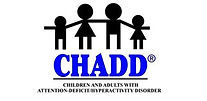Tribute To A Mom: Interest= Motivation = Action (Memory And Focus Strategies For ADHD Teens)
- Thuy Truong, M.A. Ed.

- Feb 15, 2023
- 4 min read
Updated: May 27, 2023
| by Thuy Truong, M.A. Ed., TPT Teaching and Coaching, 2/15/2023|

This post is inspired by a mother who joined my Executive Functions For The Everyday-Support Group (Teens & Adults) and she asked: "I would love some suggestions for helping my teen with memory and focus problems." Hence, I wrote this post.
Every student has a distinct cognitive and motivational pattern. It is how the student makes sense of concepts or obligations in their conceptual landscape. Let us observe a few real-life scenarios about the needed urgency to complete a task. An adult may rationalize: "The more I do now, the less I will have to do later." The thinking focus here is removing all seeds of procrastination to guarantee efficiency and predictability. However, to an adolescent student, the student may make sense of it like this in his mind, "If I do it now, I will have more downtime than if I do it later." The main locomotive of thinking here is that I will get to relax if I attend to my tasks now. Then, to a younger child, she may think: "If I do it now, I will get more playtime later." The rational thinking here is if I do this, I will get to play so much more. As you can see, three slightly different perceptions and rationale for the same motivating factor: Downtime. In pedagogical science or curriculum and instruction, this is called learning orientation. There are a few ways to change a student's thinking and motivation thereby improving their cognitive processing and cognitive memory.

Focus Strategy:
Put academic concepts in the perspective of what the individual views as important. Let's say your child likes baseball. If you can present how writing well translate into the world of baseball, then the child will most likely be all for it. Writing is now at the forefront of the child's mind. What changed? The perspective or entry point of the learning content has changed. This will then shape your child's internalized motivation to focus more during instructional time.

Memory Strategy #1:
Students with ADHD often have an interest-based nervous system (Dr. William Dodson). They remember and focus well on what they especially adore and have a preexisting fascination. Hence, the best way to leverage memory is to incorporate a small sliver of distinct passion into the learning content. Just a dash of personal passion will wake up the ADHD's working memory, even if it is just a small picture, a vibrant color, or a very unique approach to getting the message across.

Memory Strategy #2:
Visual processing in ADHD people is more active because the ADHD neuroanatomy shows there is more activity in the occipital lopes for those with ADHD than their neurotypical peers, that region of the brain is responsible for visual processing (Sowell et al., 2003). Combining the written words with pictures will enhance memory processing and memory longevity for diverse learners.

Memory Strategy #3:
Also, activating the student's prior knowledge by using topics of familiarity to help students process new learning more easily as the "more prior knowledge gives students more working memory to acquire more new knowledge to enhance their learning engagement" (Sweller et al., 1998). For example, use sports analogies to reference academic concepts, if the student is very familiar with sports.
The more thoroughly you observe how an individual absorbs and then verbalizes her understanding. Immediately, you will see how their intellectual and neural pathways are illuminated almost like an outline of a lantern on a dark background. Using that cognitive constellation, you can begin to connect the dots how a child actually thinks and this should give clues to hacks and strategies that may go well to ensure maximal cognitive processing and informational retention. Sometimes, you try something and it reveals an "in" to a person's intellectual lighthouse. Oh that's my favorite, that's when it gets really creative and fun for both the student and the coach or parent. So do go forth well-intentioned parents reading this, either way, it is fun because you will get to know your child more. And that is a treasure!
References:
Dodson, W. (2022, August). Secrets of Your ADHD Brain. ADDitude. https://www.additudemag.com/secrets-of-the-adhd-brain/
Sowell ER, Thompson PM, Welcome SE, et al. Cortical abnormalities in children and adolescents with attention-deficit hyperactivity disorder. Lancet 2003;362:1699–707
Sweller, J., Merrienboer, J. J. G. V., and Paas, F. G. W. C. (1998). Cognitive Architecture and Instructional Design. Educat. Psychol. Rev. 10, 251–296.

Thuy Truong, M.A. Ed.
I am a licensed professional educator, executive function expert, former tenured high school teacher and college instructor with certified expertise in pedagogy, cognitive psychology, and ADHD neuroanatomy with 17 years experience. I am also a student success designer who believes in supporting the whole student. I enjoy recognizing the missing puzzle in the student's learning and personalizing that solution in a language that is unique to that student. I love the creative challenge of inventing a new language for every child. Learn more here.




.png)
.jpeg)
.jpg)



Comments